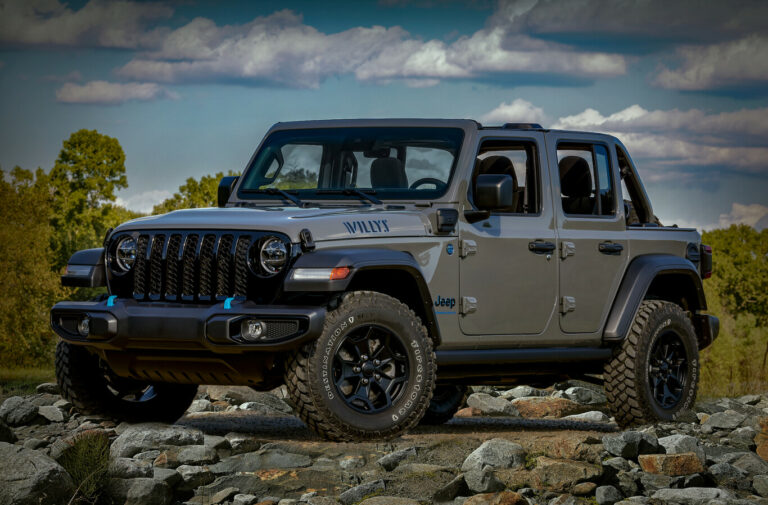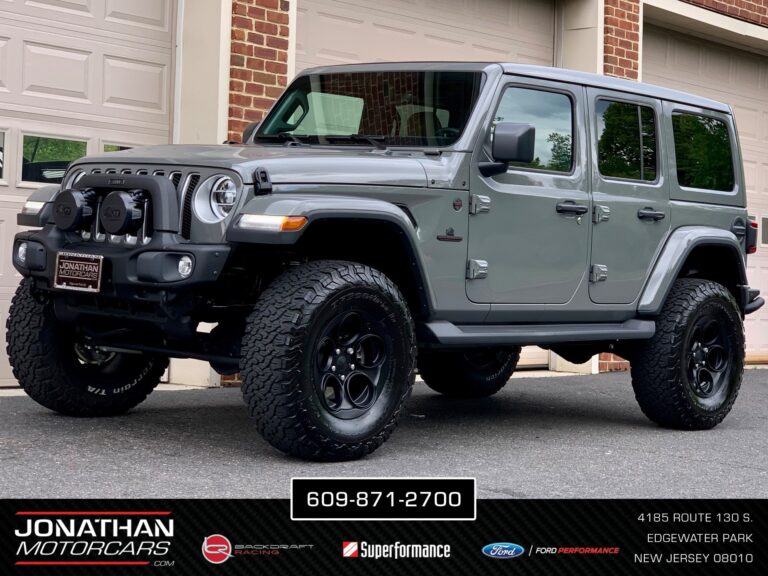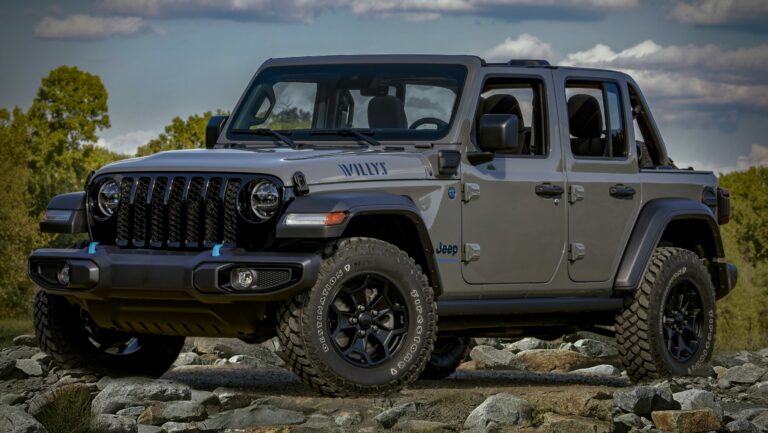1998 Jeep Grand Cherokee Transmission For Sale: A Comprehensive Guide to Keeping Your ZJ Roaring
1998 Jeep Grand Cherokee Transmission For Sale: A Comprehensive Guide to Keeping Your ZJ Roaring jeeps.truckstrend.com
The 1998 Jeep Grand Cherokee, affectionately known by its ZJ chassis code, holds a special place in the hearts of many automotive enthusiasts. Renowned for its robust off-road capability, surprising on-road comfort, and timeless design, it’s a vehicle that continues to serve its owners faithfully. However, like any machine approaching its quarter-century mark, certain components inevitably show their age. Among the most critical and often the most expensive to address is the automatic transmission.
Finding a "1998 Jeep Grand Cherokee Transmission For Sale" isn’t just about locating a part; it’s about understanding the nuances of these specific units, navigating the market, and making an informed decision that ensures your beloved ZJ continues its journey for years to come. This comprehensive guide aims to arm you with the knowledge needed to confidently purchase and install a replacement transmission, transforming a potentially daunting task into a manageable project.
1998 Jeep Grand Cherokee Transmission For Sale: A Comprehensive Guide to Keeping Your ZJ Roaring
Understanding Your 1998 Jeep Grand Cherokee Transmission
Before you even begin your search, it’s crucial to understand what transmissions were offered in the 1998 Grand Cherokee and the common issues that lead to their demise. Knowing this will help you identify the correct replacement and potentially avoid future headaches.
The 1998 Jeep Grand Cherokee primarily utilized several variations of automatic transmissions, depending on the engine and drivetrain configuration:
- 42RE: Paired with the 4.0L I6 engine in 2WD and 4WD models. This is an electronically controlled 4-speed automatic.
- 44RE: Used with the 5.2L V8 engine in 2WD and 4WD models. Also an electronically controlled 4-speed. The 44RE is essentially a beefed-up version of the 42RE, designed to handle the V8’s increased torque.
- 46RE: Found in some 5.9L Limited models (if equipped with a 4-speed automatic). This is a heavy-duty 4-speed electronic automatic, a larger version of the 44RE.
- AW4 (Aisin-Warner 4-speed automatic): While less common in the ’98 Grand Cherokee than the RE series, some earlier ZJs with the 4.0L I6 might have this robust, electronically controlled 4-speed. It’s more commonly associated with the XJ Cherokee. Always verify your specific vehicle’s transmission.

Common Signs of Transmission Failure:
Recognizing these symptoms can confirm your need for a replacement:
- Slipping Gears: The engine revs but the vehicle doesn’t accelerate properly, or it feels like the transmission is "skipping" a gear.
- Hard or Delayed Shifts: Abrupt, jerky shifts, or a noticeable delay when shifting into drive or reverse.
- No Reverse Gear: A common symptom, especially for the RE series transmissions.
- Unusual Noises: Whining, clunking, or grinding sounds coming from the transmission area.
- Fluid Leaks or Burnt Fluid: Red fluid on the ground, or a dark, burnt-smelling transmission fluid when checked.
- Check Engine Light: Often accompanied by specific transmission-related trouble codes (e.g., P0700 for transmission control system malfunction).
- Overheating: The transmission fluid temperature warning light illuminates, or the vehicle enters "limp mode."

These issues often stem from worn clutch packs, solenoid failures, valve body problems, or torque converter issues, which, given the age and mileage of most 1998 ZJs, are not uncommon.
The Market for 1998 Jeep Grand Cherokee Transmissions
Once you’ve confirmed the need for a new transmission, you’ll discover a varied market. Your primary options typically fall into three categories:
-
Used/Salvaged Transmissions:
- Pros: Generally the most affordable option upfront. Can be sourced from local junkyards, online salvage yards, or private sellers.
- Cons: Unknown history is the biggest risk. Mileage is usually high, and there’s no guarantee of how long it will last. Warranties are typically very limited (e.g., 30-90 days) or non-existent. You might be buying someone else’s problem.
- Best for: Extremely tight budgets, or if you’re comfortable with the risk and potential for a quick failure.
-
Rebuilt/Remanufactured Transmissions:
- Pros: This is often the sweet spot for value and reliability. These units have been disassembled, inspected, and had worn or failed components replaced with new or reconditioned parts (e.g., clutch packs, seals, solenoids, torque converter). They are tested thoroughly before sale. Most come with a decent warranty (e.g., 1-3 years, unlimited mileage).
- Cons: Higher cost than used units. A "core charge" is usually applied, which is refunded when you return your old transmission.
- Best for: Those seeking a balance of cost-effectiveness and reliability, looking for a longer lifespan for their ZJ.
-
New Transmissions:
- Pros: Unparalleled peace of mind, as all components are brand new. Full manufacturer warranty (if available).
- Cons: Extremely rare for a 1998 model and prohibitively expensive if found. Often, "new" might refer to a remanufactured unit from an OEM supplier rather than a truly factory-fresh build.
- Best for: Someone with an unlimited budget who wants the absolute best, though realistically, this option is seldom practical for a vehicle of this vintage.
Where to Buy:
- Local Salvage Yards/Junkyards: Good for used units, allows for inspection.
- Online Marketplaces (eBay, Facebook Marketplace): Offers a wide selection of used and sometimes rebuilt units, but requires careful vetting of sellers.
- Specialized Transmission Shops: Often sell their own rebuilt units and can provide installation.
- Auto Parts Stores (Online and Brick-and-Mortar): Many reputable chains offer remanufactured transmissions from third-party suppliers.
- Dedicated Online Transmission Retailers: Companies specializing in rebuilt transmissions often have large inventories and good warranties.
Key Considerations When Buying a 1998 Jeep Grand Cherokee Transmission
Making the right choice involves more than just finding the lowest price.
- Compatibility is Paramount:
- Engine Type: Crucial! A transmission designed for a 4.0L I6 will not work with a 5.2L V8 or 5.9L V8, and vice-versa. The bell housing patterns are different.
- 2WD vs. 4WD: A 2WD transmission lacks the output shaft and provisions for a transfer case. A 4WD transmission will have an output shaft that mates to the transfer case. Ensure you get the correct one for your drivetrain.
- Transmission Code/VIN Verification: Always provide your vehicle’s VIN (Vehicle Identification Number) to the seller. A reputable seller can use this to cross-reference and ensure you receive the exact compatible transmission (e.g., 42RE, 44RE, 46RE).
- Condition and Warranty:
- For Used: Ask for mileage, inspect for damage, and check fluid condition if possible. A brief video of it shifting in the donor vehicle (if available) can be telling.
- For Rebuilt/Remanufactured: A strong warranty (1 year/unlimited miles minimum) is non-negotiable. Understand what the warranty covers (parts, labor, shipping) and any exclusions.
- Vendor Reputation: Read reviews, check their return policy, and confirm their technical support availability. A good seller will be able to answer your detailed questions.
- Cost vs. Value: Don’t just pick the cheapest option. A slightly higher price for a reputable remanufactured unit with a solid warranty will almost always save you money and headaches in the long run compared to a cheap, high-mileage used unit that fails quickly.
- Core Charge: Understand the core charge (a deposit on your old transmission). Ensure you can return your old unit to get this money back, and factor in shipping costs for the core return.
- Shipping: Transmissions are heavy. Get a firm shipping quote upfront, including any liftgate services needed for delivery to a residential address.
Tips for a Successful Purchase and Installation
- Get a Professional Diagnosis First: Before committing to a new transmission, have a qualified mechanic confirm the transmission is the problem and not a cheaper sensor or wiring issue.
- Budget for Ancillary Parts: A "transmission for sale" usually means the transmission itself. You’ll almost certainly need:
- New Torque Converter (often included with remanufactured, but confirm)
- Transmission Fluid (correct type, e.g., ATF+4)
- Transmission Filter and Gasket Kit
- New Transmission Cooler Lines (or at least flush the old ones thoroughly)
- Possibly a new rear main seal (if you’re already there)
- Consider a Transmission Cooler Upgrade: For ZJs, especially those used for towing or off-roading, an auxiliary transmission cooler is a wise investment that can significantly extend the life of your new transmission.
- DIY vs. Professional Installation:
- DIY: Requires significant mechanical skill, proper tools (transmission jack, hoist, specialty sockets), and a safe working environment. It’s a heavy, dirty, and complex job.
- Professional: Recommended for most owners. Get multiple quotes. Ensure the shop has experience with Jeep transmissions and offers a warranty on their labor.
- Proper Break-In: Follow the manufacturer’s recommendations for initial fluid levels, driving, and any necessary computer resets (TCM re-learn procedures).
Potential Challenges and Solutions
- Finding the Exact Match: Due to variations, it can be challenging. Patience and diligent use of VIN cross-referencing are key.
- Shipping Damage/Incorrect Part: Inspect the transmission immediately upon arrival. Take photos of any damage. Do not accept it if it’s clearly wrong. Document everything.
- Installation Complexities: Bolted-on accessories (sensors, wiring harnesses) may differ slightly. Be prepared to swap some components from your old transmission.
- Post-Installation Issues: Don’t panic if it doesn’t shift perfectly initially. Often, the Transmission Control Module (TCM) needs to "re-learn" shift points. Drive gently, vary speeds, and allow the computer to adapt. Check for fluid leaks after a few days.
Price Table: 1998 Jeep Grand Cherokee Transmission For Sale (Estimated Ranges)
Please note these are estimates and prices can vary significantly based on location, seller, warranty, and specific transmission type (42RE vs. 44RE/46RE). Core charges are typically an additional $200-$500.
| Transmission Type/Condition | Estimated Price Range (USD) | Notes |
|---|---|---|
| Used/Salvaged | $350 – $800 | Varies based on mileage, perceived condition, and warranty (if any). Often 30-90 day warranty. May not include torque converter. |
| Rebuilt/Remanufactured | $1200 – $2500 | Higher end for heavy-duty 46RE. Often includes a new torque converter. Typically 1-3 year unlimited mileage warranty. Core charge usually applies. |
| New (OEM/Factory) | $3000+ | Extremely rare and often refers to a "factory remanufactured" unit. Prices can be much higher and availability is limited. |
| Installation Cost (Labor Only) | $600 – $1200 | Varies by shop rates and complexity. Excludes parts like fluid, filter, cooler lines. |
| DIY Associated Parts | $150 – $400 | Fluid (12-16 quarts), filter, gasket, new cooler lines, potential auxiliary cooler. |
| Total Project Cost | $1100 – $4100+ | This range covers buying a used unit and DIY install, up to buying a remanufactured unit with professional installation and new parts. |
Frequently Asked Questions (FAQ)
Q: What transmission does my 1998 Grand Cherokee have?
A: It depends on your engine and drivetrain. 4.0L I6 engines typically have the 42RE. 5.2L V8s usually have the 44RE. Some 5.9L V8s might have the 46RE. The best way to confirm is to check your vehicle’s VIN with a Jeep dealership or a reputable parts supplier, or look for a sticker on the transmission itself.
Q: Can I put a different transmission in my Jeep?
A: Generally, no, not without significant modifications. The bell housing bolt patterns are engine-specific, and the electronic controls (TCM) are calibrated for the original transmission type. Swapping between 42RE, 44RE, and 46RE is usually not possible or practical due to internal differences and computer programming.
Q: What’s a core charge?
A: A core charge is a refundable deposit paid when you purchase a remanufactured part. It incentivizes you to return your old, failed part ("the core") so it can be rebuilt and recycled. Once the seller receives your old transmission, they refund the core charge.
Q: How long do these transmissions typically last?
A: Original RE series transmissions in ZJs often last 150,000 to 200,000 miles with good maintenance. However, factors like towing, aggressive driving, and lack of fluid changes can shorten their lifespan. A well-remanufactured unit can often last just as long, if not longer, than the original.
Q: Is it worth replacing the transmission in an old Jeep?
A: For many 1998 Grand Cherokee owners, absolutely. If the body is solid, the engine is strong, and you love your ZJ, replacing the transmission is often more cost-effective than buying a new vehicle, especially given the rising prices of used cars. It breathes new life into a capable and classic SUV.
Q: What else should I replace when I change the transmission?
A: Always replace the transmission fluid, filter, and pan gasket. It’s also highly recommended to replace the torque converter (often included with remanufactured units) and flush or replace the transmission cooler lines to ensure no debris from the old transmission contaminates the new one. Consider an external transmission cooler for longevity.
Q: Do I need to program anything after installing a new transmission?
A: For the 1998 Grand Cherokee, the Transmission Control Module (TCM) will typically "re-learn" the shift points over a short period of driving. Some mechanics might perform a "quick learn" procedure with a scan tool, but often just driving the vehicle normally for a few hundred miles will allow it to adapt.
Concluding Summary
Purchasing a 1998 Jeep Grand Cherokee transmission for sale is a significant investment that can extend the life of your cherished ZJ for many more miles. The key to a successful outcome lies in thorough research, understanding the specific transmission your vehicle requires, and choosing a reputable seller. Opting for a quality remanufactured unit with a solid warranty often represents the best balance of cost and reliability.
By paying close attention to compatibility, vetting your source, and budgeting for associated parts and potentially professional installation, you can navigate this process with confidence. Your 1998 Jeep Grand Cherokee is a testament to rugged durability, and with a healthy transmission, it will continue to conquer trails and cruise highways, reminding you why you fell in love with it in the first place.





